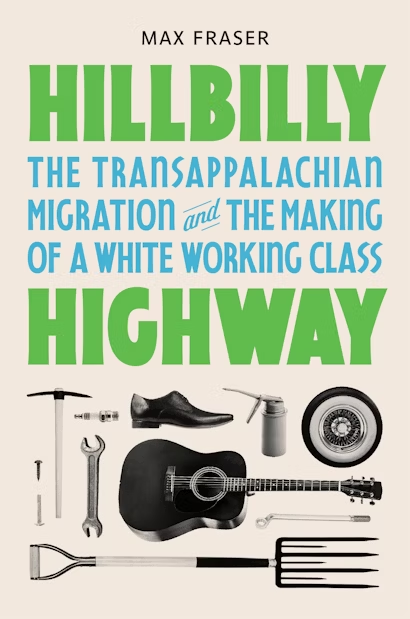It does not require an advanced degree to decipher one key strategic calculus underlying President Joe Biden’s multi-pronged industrial policy agenda, designed to bolster domestic manufacturing while speeding the transition to a green economy and now nicknamed “Bidenomics” by friend and foe alike. In the nine months beginning in August 2022, more than 75 percent of new investment subsidized by the CHIPS and Inflation Reduction Acts, Bidenomics’ legislative centerpieces, went towards semiconductor and clean energy projects located in Republican congressional districts. Two deep-red states, Georgia and South Carolina, led all others during that time in newly announced manufacturing endeavors. The southeast generally, a bastion of GOP control, has attracted more federally subsidized projects than any other region in the country.
Not content to let such numbers speak for themselves, the White House spent much of the year hammering home to voters just who they have to thank for the windfall. So it was that Vice President Kamala Harris was dispatched to Dalton, Georgia, in the heart of administration-scourge Marjorie Taylor Greene’s district, to tout a new $2.5 billion investment by a South Korean clean energy company that promised to “create 2,500 more jobs right here in Georgia.” As Biden himself reminded an audience in West Columbia, South Carolina, home to a new solar energy partnership made possible by tax incentives provided by the IRA, “Every Republican member of the House in this state voted to repeal the clean energy provisions of the Inflation Reduction Act that…attracted all these jobs.”
Bidenomics’ regional tilt does smack of a crudely tactical focus on the 2024 elections. But it also makes good economic sense. No region in the country has witnessed a greater decline in its manufacturing employment rate during the twenty-first century than the southeast. After gaining jobs during the first rounds of deindustrialization in the 1970s and 1980s, the South experienced catastrophic job loss beginning in the 1990s, as trade liberalization measures exposed critical southern industries, textiles and apparel most of all, to new forms of import competition. The political consequences of these developments, meanwhile, had begun to make themselves clear long before Marjorie Taylor Greene and her MAGA-brethren appeared on the scene. Recent research has demonstrated that it was free trade policies authored by Democrats during the 1990s, like NAFTA and the lifting of import restrictions on textiles, which prompted white working-class voters in the region to abandon the party in droves—much more decisively, in fact, than they had after the passage of the historic civil rights bills of the 1960s. Regional deindustrialization, as much if not more so than the politics of racial resentment, explains the current era of one-party Republican rule in the South.
In other ways, the regional economic imbalance that the Biden administration’s industrial policy aims to address is nothing new. Throughout much of the twentieth century, the relative underdevelopment of the southern industrial sector had far-reaching political effects both inside the region and out. In some parts of the South, the weakness of southern industry empowered a plantocratic elite who were the architects and fiercest defenders of Jim Crow. Elsewhere, it paved the way for the ascendance of an oligarchy of mining interests to strip the region of its natural wealth and embed the South in a carbon capitalist regime that endures to this day. And across the region, a paucity of jobs in the most densely organized industrial sectors, combined with the generally inhospitable political climate, kept unions scarce, workers relatively powerless, and wages desperately low throughout the heyday of the modern American labor movement.
For decades, one common way that poor white southerners responded to these and other symptoms of the economic underdevelopment of the region was by getting out. Millions of them—at least eight million, perhaps many more—headed north, to the booming cities and factory towns of the industrial Midwest, along what came to be known over the first two-thirds of the twentieth-century as the “hillbilly highway.” There they found the kinds of things that had remained in such vanishingly short supply across much of the rural South: good paying jobs, union protections, access to the growing inventory of creature comforts provided by the modern consumer order. Over time, some would feel the tug to return to the South. Many others would stay, establishing beachheads in the urban Midwest where the familiar trappings of home—country music, the evangelical church, that distinctive southern “twang”—became part of the complex tapestry of the region’s working-class culture.
But migrants along the hillbilly highway also encountered hostility and ostracization from their new coworkers and neighbors, who deplored the recent arrivals for their rural sensibilities, for their attachments to regionally alien cultural habits and to an assortment of lower-class attitudes and behaviors. Municipal leaders in Chicago, Detroit, Cincinnati, and other large and small cities throughout the Midwest wrung their hands over the emergence of “hillbilly ghettoes,” where vice and crime seemed suddenly ubiquitous. Urban reformers targeted them for a variety of more or less intrusive forms of disciplinary intervention; while policy professionals at the highest levels of government identified them with a growing crisis unfolding in American inner cities, and began drafting ways to engineer their manifold cultural “pathologies” out of existence.
The hillbilly highway is one of the least-recognized outgrowths of the patterns of development and underdevelopment that plagued the rural South for much of the twentieth century, a massive population displacement driven by the irreversible disruptions that capitalist agriculture and resource-extractive industrialization wrought on the traditional living and working arrangements of the southern countryside. It is also one of the untold stories of recent American political history. For much of the twentieth century, migrants along the hillbilly highway, suspended between experiences of mobility and marginalization as they made their way between rural and urban social settings and economic regimes, remained something of a white working-class “other” at the heart of the New Deal Order. As that order began to decompose amidst the onset of economic decline and deindustrialization in the 1970s, their class position and unreconciled cultural markings would alienate them from the middle- and upper-class urban professionals who were increasingly coming to to shape the worldview and policy priorities of the post–New Deal Democratic Party.
By the turn of the new century, white working-class voters along the footprint of the hillbilly highway were increasingly falling under the sway of precisely the types of pseudo-populist Republican politicians who now array themselves so uniformly against President Biden’s industrial policy agenda. Might Bidenomics’ long overdue focus on the political consequences of the regional economic imbalances embedded in the country’s industrial past present a path forward for prizing such voters away from their right-wing tempters? If so, the impacts may be felt long past next year’s elections.
Max Fraser is assistant professor of history at the University of Miami. A former journalist, he has written for the Nation and other publications.

